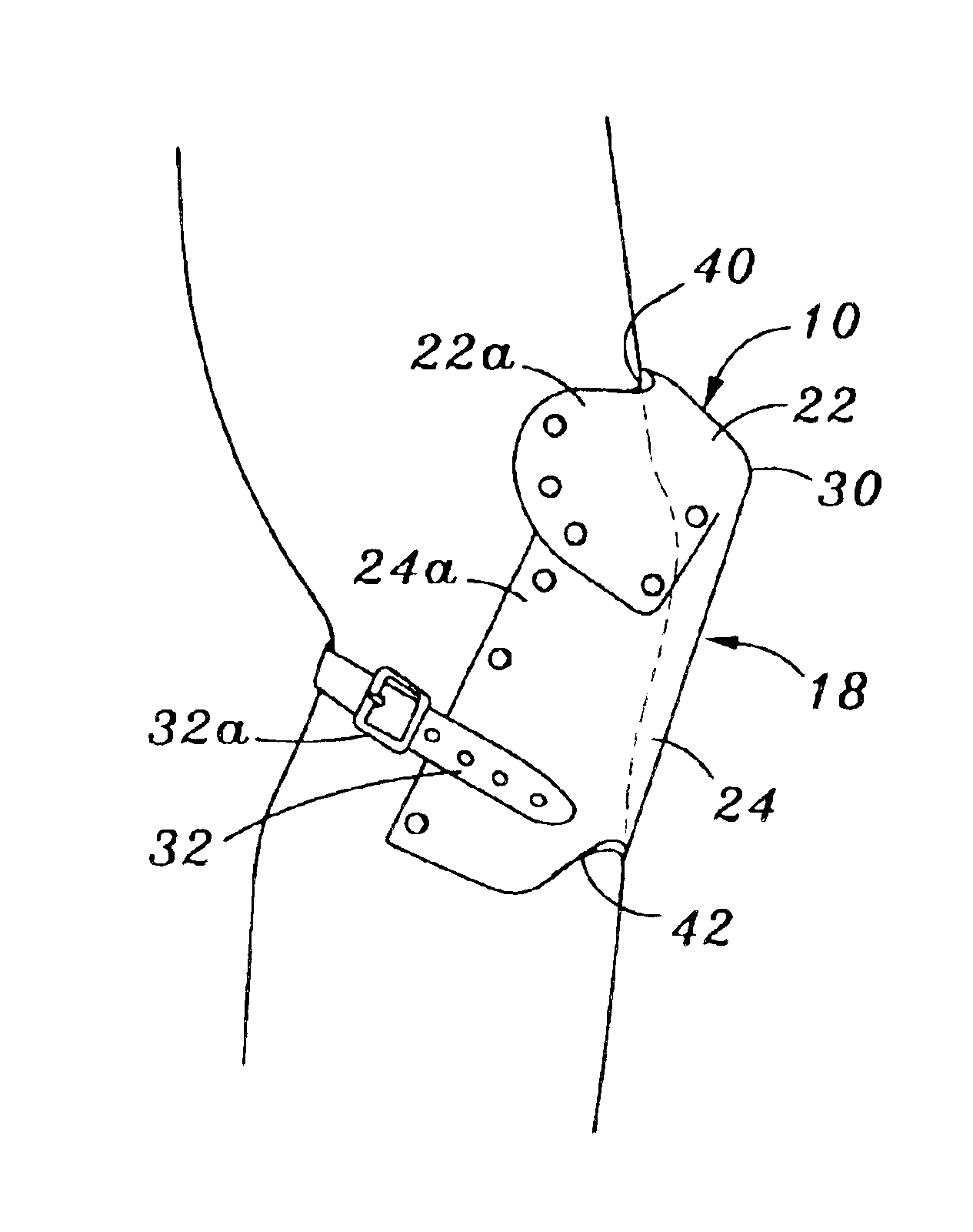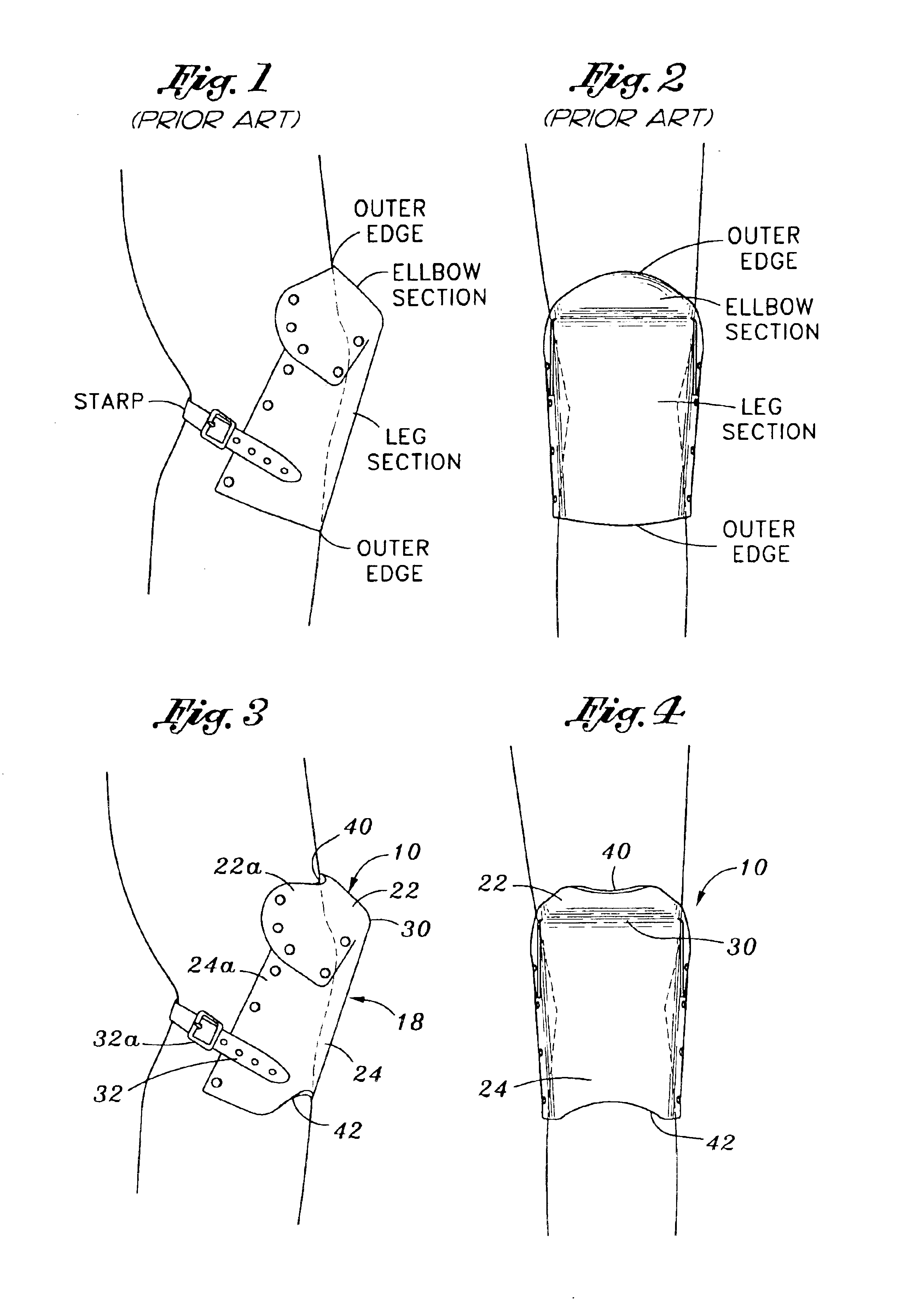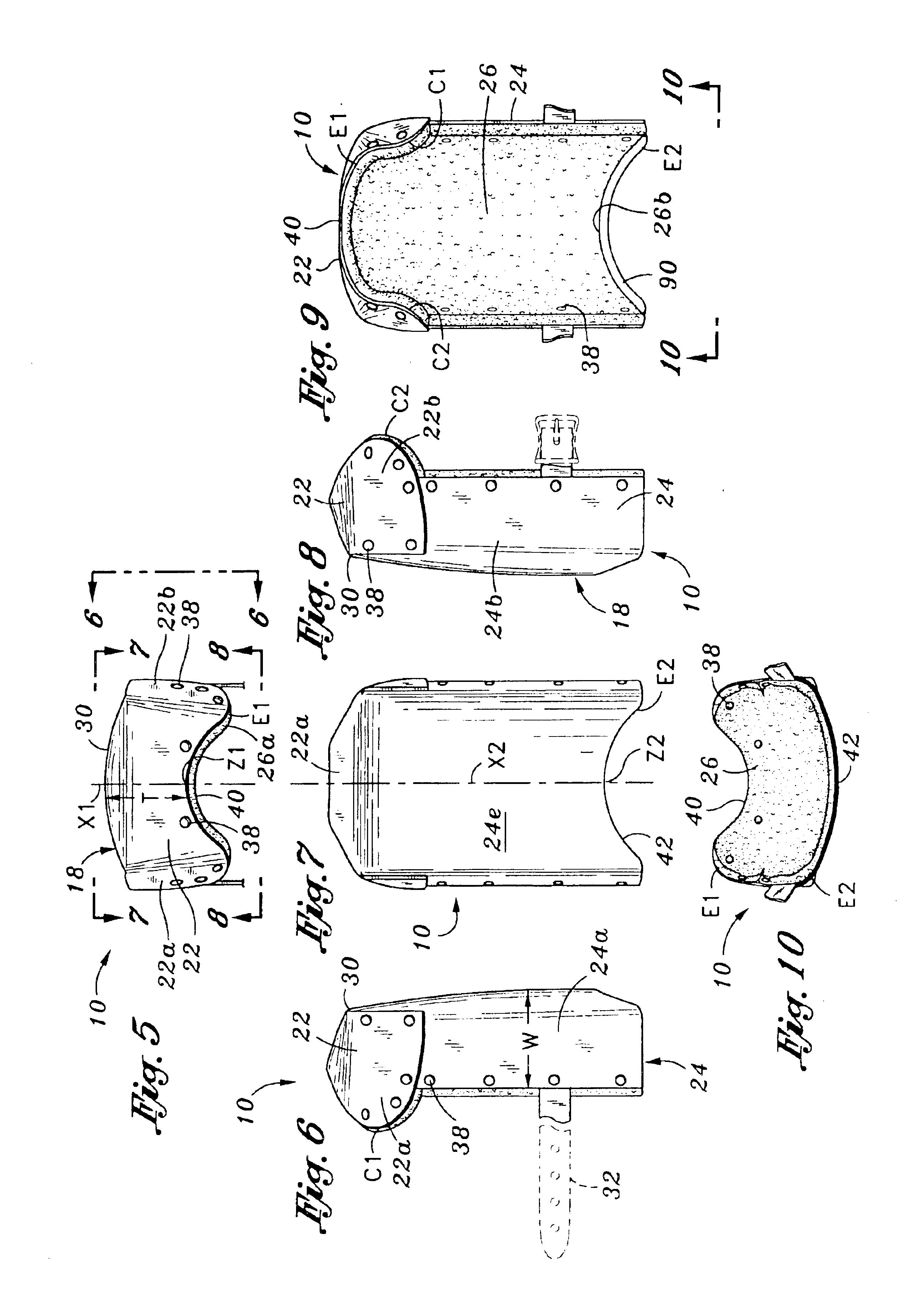Knee pad and method of manufacture
a technology applied in the field of knee pads and manufacturing methods, can solve the problems of conventional knee pads that tend to move sideways, don't fit comfortably on the user's knees,
- Summary
- Abstract
- Description
- Claims
- Application Information
AI Technical Summary
Benefits of technology
Problems solved by technology
Method used
Image
Examples
first embodiment
The first embodiment of this invention, the knee pad 10 shown in FIGS. 3 through 10, is made from a single sheet 12 (FIG. 11) of durable, pliable sheet material such as leather or rubber. The sheet material 12 has a thickness of about ⅛ inch, and it is slit along the lines 14 and 16 to form an upper portion A and a lower portion B, defining marginal portions 14a, 14b, 16a, 16b may be bent inward to form, as depicted in FIGS. 3 through 10, a body 18 having an open side 20, an elbow section 22 and a leg section 24. The elbow section 22 has a length of about 3 inches, and the leg section 24 has a length of about 7 inches in this embodiment. Consequently, the length of the elbow i=2 section 22 is substantially shorter than the length of the leg section 24. As best shown in FIGS. 9 and 10, the interior of the knee pad 10 is covered with liner material 26 of foam or felt having a uniform thickness, made of one or more plies, ranging from about ⅛ to about 1 inch.
The elbow section 22 and a ...
second embodiment
The second embodiment of this invention, the knee pad 50 shown in FIGS. 13 through 18, is similar to the first embodiment, the knee pad 10, and the same numerals are used for common components. Like the first embodiment, the knee pad 50 has an elbow section 22 and a leg section 24 joined at a corner 30, and a strap 32 attached to the leg section to enable the user to secure the knee pad 50 to the user's knee. The front walls 22c and 24c of the elbow and leg sections respectively have outer edges E1 and E2 that are inwardly contoured forming thereat concave indentations 40 and 42, respectively. Each concave indentation 40 and 42 has a depth D of from 1 to 2 inches, preferably each indentation is of the same depth. The concave indentations 40 and 42 have the same shape, being sections of a circle that are mirror images of each other. The concave indentation 40 in the elbow section's front wall 22c has a zenith at the central longitudinal axis X1 of this front wall 22c, and the concave...
PUM
 Login to View More
Login to View More Abstract
Description
Claims
Application Information
 Login to View More
Login to View More - R&D
- Intellectual Property
- Life Sciences
- Materials
- Tech Scout
- Unparalleled Data Quality
- Higher Quality Content
- 60% Fewer Hallucinations
Browse by: Latest US Patents, China's latest patents, Technical Efficacy Thesaurus, Application Domain, Technology Topic, Popular Technical Reports.
© 2025 PatSnap. All rights reserved.Legal|Privacy policy|Modern Slavery Act Transparency Statement|Sitemap|About US| Contact US: help@patsnap.com



